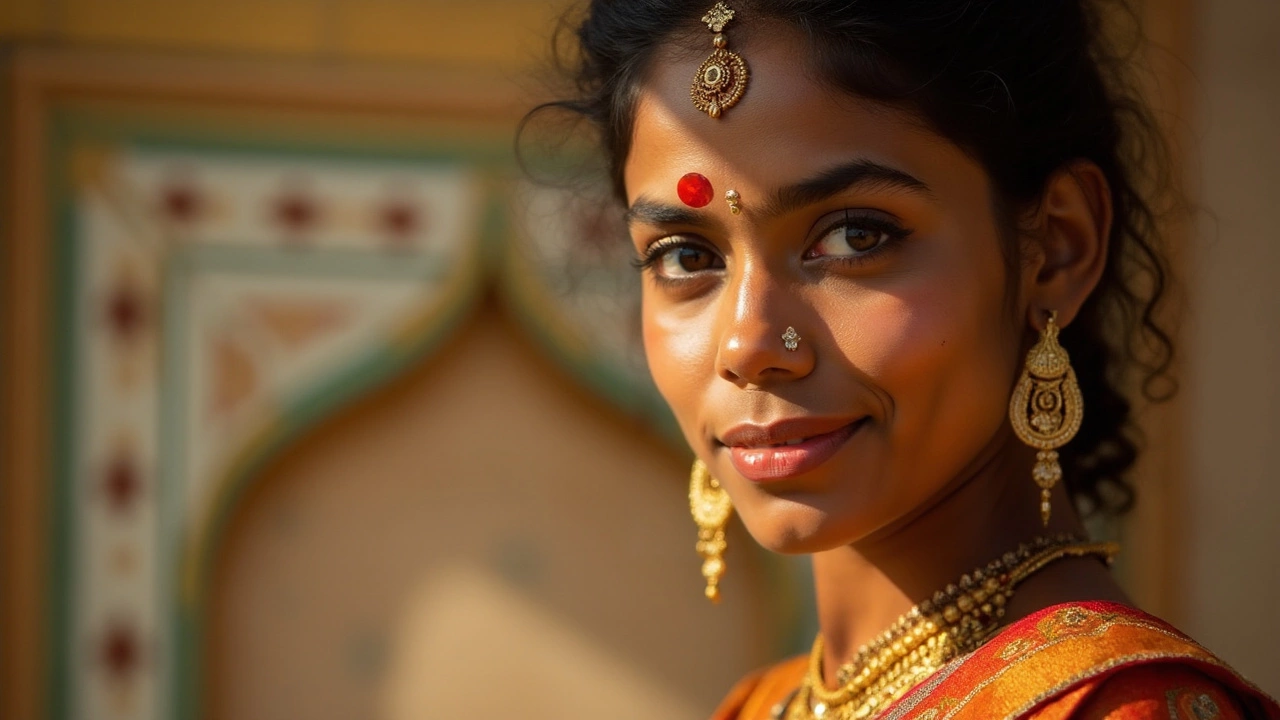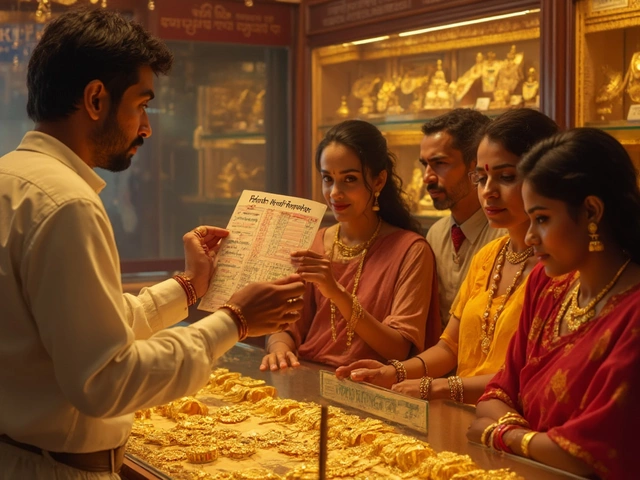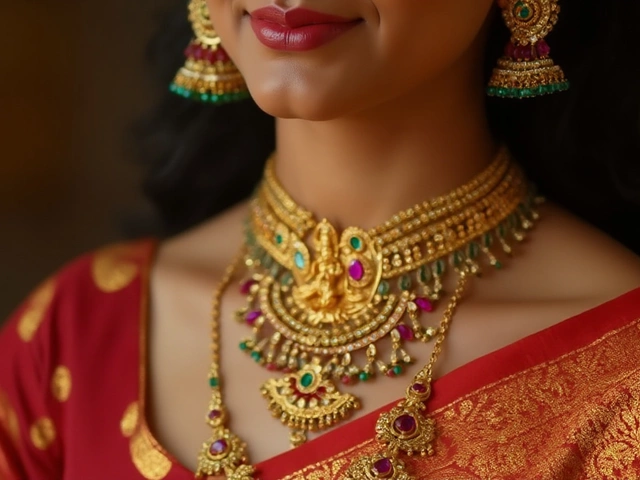
Nose piercings have been a form of adornment across cultures for centuries. While they are often seen as a modern trend, their roots run deep into cultural and spiritual traditions. For many, the decision to get a nose piercing goes beyond fashion; it can be a reflection of heritage, beliefs, or personal expression.
The choice of which side of the nose to pierce is not just a matter of aesthetics for everyone. Particularly, a nose piercing on the right side carries various connotations and significance. This article delves into these meanings and explores why the right-side placement may be preferred or avoided, depending on one's cultural or personal background.
Whether you're considering a nose piercing for its stylish appeal or drawn to its deeper meanings, understanding its significance can help in making an informed choice that resonates with your identity. From cultural beliefs to tips on design and care, let's explore what a right-side nose piercing could symbolize for you.
- Cultural Significance
- Personal and Aesthetic Reasons
- Health and Medicinal Beliefs
- Choosing the Right Design
- Care and Maintenance Tips
Cultural Significance
Navigating the intricate tapestry of global traditions and customs, it's fascinating how a simple jewel-studded nose pin can encapsulate centuries of cultural history. Nose piercings, especially on the right side, have diverse meanings across various regions and societies. To start with, in Indian tradition, the right-side nose piercing is often associated with the Ayurvedic belief that it correlates to a woman's reproductive health. It is believed to ease menstruation pains and even assist in childbirth. The practice is deeply rooted and signifies a rite of passage towards femininity and maturity.
The cultural significance stretches beyond India. In the Middle East, nose piercings, particularly on the right side, can represent an intersection of wealth and social status. Historically, they were used as a visible marker that indicated a family's affluence or a woman's dowry status. Meanwhile, in some African cultures, tribal communities have been known to use nose piercings to denote ancestral alignment and spiritual communication, serving as a bridge between the physical and spiritual worlds.
Modern interpretations in Western cultures often focus on personal meaning rather than historical or traditional influences. Here, a right-side nose piercing can be a bold statement of personal rebellion, aesthetic preference, or a symbol of style sophistication. It's a visible commitment to one's identity in a world that constantly evolves its fashion sensibilities. In an era of self-expression, it's reported that a significant percentage of individuals choose the right side simply because of its unique tradition-breaking connotation, subtly shedding light on deep-rooted societal norms they're willing to explore and redefine.
"The cultural significance of nose piercings extends far beyond mere decoration; they serve as a testament to history, identity, and personal expression," notes Dr. Lina Sladen from the Cultural Anthropology Institute.
Recent surveys suggest an interesting rise in the popularity of nose piercings in media and among societal icons, evidencing a resurgence in cultural jewelry's allure. Many attribute this to a growing appreciation for global artistry and tradition, coupled with a desire to align with the empowering histories behind such practices. Whether a nod to cultural heritage or a personal style statement, the right-side nose piercing holds a lasting allure that transcends generational and cultural divides, carving a place for itself in the annals of meaningful fashion.
As with any cultural symbol, the significance of nose piercings evolves with time, molded by societal shifts and individual interpretations. It is not merely an accessory but a narrative thread that connects and celebrates an array of cultural identities, telling the silent stories of those who choose it. The complexities tied to such a pervasive yet personal practice invite a more profound inquiry and appreciation, prompting us all to celebrate not just the jewel but the rich cultures and beliefs it represents.
Personal and Aesthetic Reasons
For many women, a nose piercing is a vibrant expression of their unique style and persona. Selecting the right-side nose piercing is not merely about aesthetics; it's often a deeply personal choice that mirrors one's character or phase of life. This decision might be influenced by the contours of the face, personal preferences, or even which side they believe enhances symmetry. The notion of symmetry plays a significant role in beauty and facial aesthetics. Many people believe that their right side is more photogenic, serving as the 'better' side, so adorning it with a delicate nose pin design emphasizes their favored profile.
The journey towards a right-side piercing might be driven by celebrities or cultural icons that an individual admires. Several influential personalities have sported nose piercings, presenting it as a chic statement. The choice is often applauded when it resonates with one's internal sense of authenticity or rebellion. It's worth noting how fashion cycles influence personal choices; trends from the 90s are resurfacing, where nose jewelry sees a resurgence in popularity. Even though the choice of side may seem arbitrary, it carries significant weight in enhancing one's aesthetic appeal.
Coco Chanel once noted, "Adornment, what a science! Beauty, what a weapon! Modesty, what elegance!"A nose piercing embodies this sentiment, serving as both a subtle and bold embellishment. For some, the choice of this accessory is guided by the jewelry available; delicate studs or intricate hoops might appeal for their aesthetics or their added shimmer against the skin. The array of materials, styles, and nose pin designs cater to personalities from minimalist to exuberant. Each chosen piece can convey elegance, defiance, or simplicity. The allure of encrusted diamonds, intricately designed gold hoops, or simple silver studs elevates the perception of personal taste and refinement.
Consider too the personal transformations a piercing symbolizes. For some individuals, the act of piercing signifies a rite of passage, reflecting personal growth or change. Women in particular might choose to mark significant life events such as a personal achievement, a milestone age, or a new chapter, with this distinct modification. It can represent a newfound self-reliance or liberation for many, making every piece of nose jewelry not just decorative, but emblematic of their journey. The motivation to choose the right side could be as simple as aligning with this personal story, ensuring the symbolism is visible to the world.

Health and Medicinal Beliefs
The practice of nose piercings, particularly on the right side, is not only a marker of style but has also been attributed with various health benefits in traditional medicine systems such as Ayurveda. This ancient Indian system, which dates back thousands of years, suggests that piercing the right nostril may have a positive effect on a woman's reproductive health. According to Ayurvedic practices, the right nostril is connected to the female reproductive organs, and it's believed that a piercing here can ease menstrual pain and promote an easier childbirth. While these beliefs may not be widely recognized in Western medicine, they hold a significant value in cultures that follow Ayurvedic principles.
From a holistic viewpoint, the notion that body piercings can influence physical health isn't entirely outlandish, as each part of the body is interconnected through meridians, which are pathways for life-energy (or chi). The idea is that altering or enhancing these pathways might affect one's health positively. Similarly, traditional Chinese medicine also looks at body modifications through the lens of acupuncture, where specific points on the body align with organs and nerves. In this light, a nose piercing on the right side might contribute to a balance of energy flow, thus supporting overall well-being.
While scientific backing is limited in these traditional beliefs, it’s notable that people across cultures have observed perceived health benefits from piercings for generations. A study noted in the Journal of Psychology and Clinical Psychiatry remarked on how body art and piercings hold a complex and evolving role in modern and historical contexts. According to an article in the publication, "Body modifications, such as piercings, do not only serve as a cultural or aesthetic practice but in some communities, they are tightly interwoven with beliefs of personal health and protection."
In tribal groups and indigenous communities worldwide, a right-side nose piercing might also be a part of a ritual for health or even protection against evil spirits. For example, some African tribes consider nose piercings a form of spiritual shield. Although these beliefs might sound mystical, they underscore the deep connection between adornments and well-being acknowledged by many non-Western cultures. Therefore, while the health benefits of a right-side nose piercing might not be scientifically proven, they remain a fascinating facet of its cultural and spiritual implications.
Choosing the Right Design
When it comes to selecting the perfect nose jewelry for a right-side piercing, the choices are not only about aesthetics but also meaningful expression. It's a venture into exploring, expressing, and perhaps even celebrating identity. The nose piercing significance varies greatly, and the design you choose will often mirror a piece of who you are or wish to be. From minimalist studs to elaborate rings, each type of nose pin can transform your appearance, complementing or even subtly contrasting your style.
The variety in design begins with materials. Opt for high-quality metals like gold, silver, or titanium. These not only add a luxurious sheen but are essential for those prone to allergies. The choice of metal can also directly impact the health of your piercing. Gold, for instance, often symbolizes prosperity and is traditionally used in many cultures due to its hypoallergenic properties.
Shape and size also play critical roles. Studs are typically subtle and ideal for everyday wear, while rings or hoops offer an adventurous flair and can transform a look from simple to striking. Double or even triple rings can be stacked for a unique presentation. Despite being less common, septum rings as an extension of a nose ring ensemble can create a daring statement.
Color is another avenue where personality shines through. Classic shades offer elegance, while vibrant hues can reflect a playful or spirited disposition. Beaded designs or those featuring precious stones often add a touch of sophistication. Either way, choosing a color that complements your skin tone and wardrobe can ensure that your accessories feel entirely personal and aesthetic.
Shapes extend beyond circles and studs with crescents, flowers, and mythical symbols emerging as popular trends. Bold or intricate, these designs may represent anything from cultural relevance to personal beliefs. "What one wears reveals a part of who they are," suggests renowned fashion critic, Sarah Monasterio.
"A nose pin is no exception—it declares one's individuality in an understated yet profound manner."
For those who enjoy change, interchangeable sets bring variety without needing multiple piercings. Look for designs that can be easily switched—perhaps a stud for formal settings, or a playful hoop for casual outings. This adaptability not only enhances wearability but also aligns with diverse social events, truly reflecting the wearer's adaptability and dynamic spirit.
Consider consulting with a piercing professional or a seasoned jeweler for personalized advice. They can guide you regarding weight, fit, and aftercare—key considerations to ensure lasting comfort and style. Remember that while fashion options abound, personal comfort should be paramount. Poorly selected pieces can cause irritation or lead to health complications, emphasizing the need to balance looks with wellbeing.
Ultimately, the right-side nose piercing is not just about following trends but also about creating a harmonious blend between inner beliefs and outer beauty. It's a way to wear your story proudly and transform it into art for the world to see.

Care and Maintenance Tips
Taking care of a new nose piercing, especially on the right-side, involves a commitment to hygiene and proper maintenance practices. A freshly pierced nose is susceptible to infections and complications if not properly cared for. The journey begins from the very day you get your piercing, and it continues long after the initial healing phase. Ensuring your piercing stays healthy and looks great involves a mix of cleaning routines, lifestyle adjustments, and a patient mindset. Let's explore some tried-and-tested care tips to keep your nose piercing in perfect condition.
Cleaning and Hygiene
Adhering to a strict cleaning regimen is crucial. It’s advisable to clean your piercing at least twice a day using a saline solution. This helps to remove any crusts, bacteria, and ensures the area stays moist enough to support healing. Most piercings heal within 4 to 6 months, during which this practice is essential. Avoid using alcohol-based cleaners as they can dry out the skin and irritate the area unnecessarily. Remember, gentle dabbing is key; scrubbing can cause irritation and disruption to the healing process.
Minimizing Irritation
Avoid touching your nose piercing with unwashed hands as fingers are packed with bacteria that can easily transfer. Sleeping on the side of your piercing initially should be avoided to prevent irritation and the risk of embedding the jewelry into the skin. Helmets, masks, or anything that presses against the skin should be cautiously worn. Any discomfort or redness should be closely monitored. If you notice persistent pain or an unusual discharge, it might be time to consult a professional piercer or a healthcare provider.
Choosing the Right Metal
Choosing the appropriate jewelry is more significant than simply matching it with your outfits. The right metal choice can make a significant difference in healing time and comfort. Hypoallergenic materials such as titanium, niobium, and surgical steel are generally recommended because they minimize the risk of allergic reactions. Gold, albeit widely used, can sometimes cause irritation in those with sensitive skin. It's best to consult with a reputable piercer when selecting your jewelry post-healing.
“A well-maintained piercing is a testament to good effort and rewards with a lifetime of beauty and personal statement,” says Pierce Atkinson, a renowned body artist in Sydney.
Common Pitfalls to Avoid
One mistake people often make is changing their nose jewelry too soon. It’s tempting to switch things up, but changing jewelry prematurely can disrupt the healing tissue. Always ensure adequate healing time and seek professional help if you're unsure. Also, taking thorough care not to submerge your new piercing in bodies of water like pools and lakes is essential as they can harbor bacteria. With proper diligence, your nose piercing will stay perfect for years to come.


